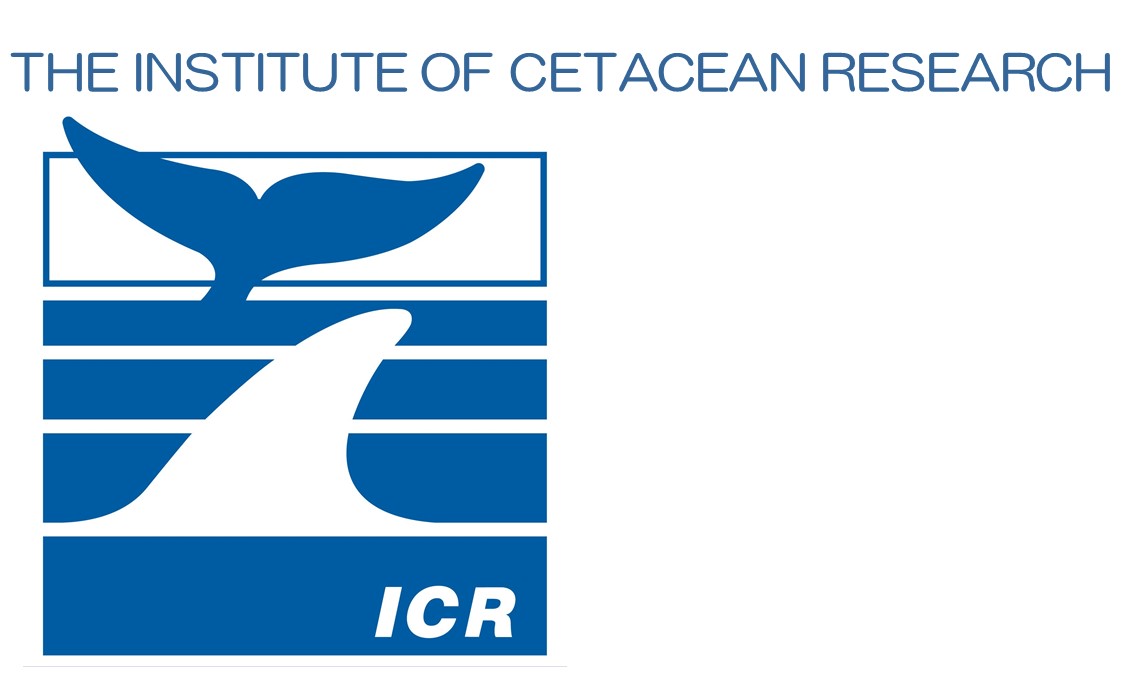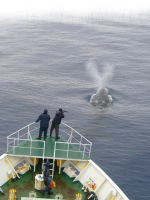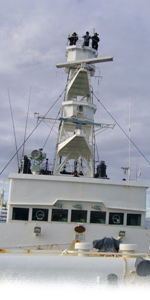Completion of Japanese Abundance and Stock-structure Surveys in the Antarctic (JASS-A) 2023/2024 Research Cruise
March 15, 2024
Designated Corporation for Scientific Whale Research
THE INSTITUTE OF CETACEAN RESEARCH
1. Background
This research program is a continuation of the Japanese government's research program (non-lethal research) aimed at the sustainable use of whale resources in the Antarctic Ocean, and this survey is the fifth research cruise in the Antarctic after Japan's withdrawal from the International Whaling Commission (IWC) on June 30, 2019. This year's research in the Antarctic included a sighting survey, biopsy sampling, satellite tagging, oceanographic observation and collection of other relevant information on cetaceans.
The scientific information obtained from this research will be provided to relevant international organizations such as the IWC Scientific Committee, the Ecosystem Monitoring and Management Working Group of the Commission for the Conservation of Antarctic Marine Living Resources (CCAMLR) and the Scientific Committee of the North Atlantic Marine Mammal Commission (NAMMCO) in order to contribute to the appropriate management of whale resources in the Antarctic Ocean.
The research vessels Yushin-Maru No. 3 and Yushin-Maru No. 2 departed from Shiogama, Miyagi Prefecture on December 8, 2023, and returned to port (Yushin-Maru No. 3 to Setoda, Hiroshima Prefecture and Yushin-Maru No. 2 to Shiogama) on March 15, 2024 after conducting research for 36 days (from January 7 to February 11, 2024) in the south of 60 degrees south latitude.
2. Survey plan and summary of results
This survey is financially supported by the Fisheries Agency, and the Institute of Cetacean Research takes the lead in planning, implementing and conducting analyses of data obtained from it.
This year's survey was conducted by two research vessels in the western part of Area IV, one of the IWC management areas of the Antarctic Ocean (south of 60 degrees south latitude and between 70 and 100 degrees east longitude).
During the survey, we collected sighting data consistent with previous surveys, which are necessary to estimate whale abundance. In addition, we collected numerous biopsy samples and also successfully collected various other non-lethal survey data by attaching satellite tags to cetaceans and other methods. As in the previous year, this year's cruise was carried out with two research vessels, which enabled us to efficiently cover the survey area. This year, a researcher from Chile's CEQUA1 was also on board and participated in the survey.
The research confirmed multiple whale species, including blue, fin, Antarctic minke and humpback whales, suggesting that many whale species migrating to the Antarctic Ocean maintain a healthy stock status.
Humpbacks were the most abundant species, distributed in high densities throughout most of the survey area, followed by fin whales, which were found mainly in the northern part of the survey area. The third most abundant species, the Antarctic minke whale, was found mostly in the southern part of the survey area, and it was confirmed that they were particularly densely distributed in the waters near the Antarctic Continent.
During the present survey, the expansion of the distribution range of fin and humpback whales and the polarization of the distribution range of Antarctic minke whales were observed. In recent years, while the remarkable recovery of humpback and fin whales and the expansion of their distribution range have been confirmed, it is thought that the Antarctic minke whale, which is in a competitive relationship with these whales for their prey organism, Antarctic krill, is changing its distribution range from the waters near the ice edge, which has been the main distribution area of the past, to deeper into the ice edge, where humpback and fin whales cannot penetrate. In this survey we were able to collect important information on these whales from the viewpoint of resource research, which supports the change in the distribution of these whales.
In addition, this fiscal year, the VTOL-UAV (Vertical Take Off and Landing, Autonomous Unmanned Aerial Vehicle) ASUKA, which has been developed by the institute, was fully deployed into the survey, and collected information on cetaceans and sea ice over a total distance of 551 km by autonomous flight.
1 Center for the Studies of the Quaternary of Fuego Patagonia and Chilean Antarctic (CEQUA), Punta Arenas, Chile.
2.1 Main Research Objectives
The main research objectives of JASS-A are:
(1) Study of abundance and their trends of large whale species in the Antarctic Ocean.
(2) Study of the distribution, movement and stock structure of large whale species in the Antarctic Ocean.
2.2 Research Cruise and Survey Period
Research cruise: 99 days. (Yushin-Maru No. 3 and Yushin-Maru No. 2).
Yushin-Maru No. 3: From December 8, 2023 (Shiogama departure) to March 15, 2024 (arrival in Setoda).
Yushin-Maru No. 2: From December 8, 2023 (Shiogama departure) to March 15, 2024 (arrival in Shiogama).
Number of survey days (within the research area):
From January 7 to February 11, 2024 (36 days).
2.3 Research Area
This year's survey area was the western part of Area IV, one of the IWC management areas in the Antarctic Ocean, south of 60 degrees south latitude and between 70 and 100 degrees east longitude (Figure 1). In addition, mid- and low-latitudinal sighting surveys were conducted during the cruise to and from the research area.
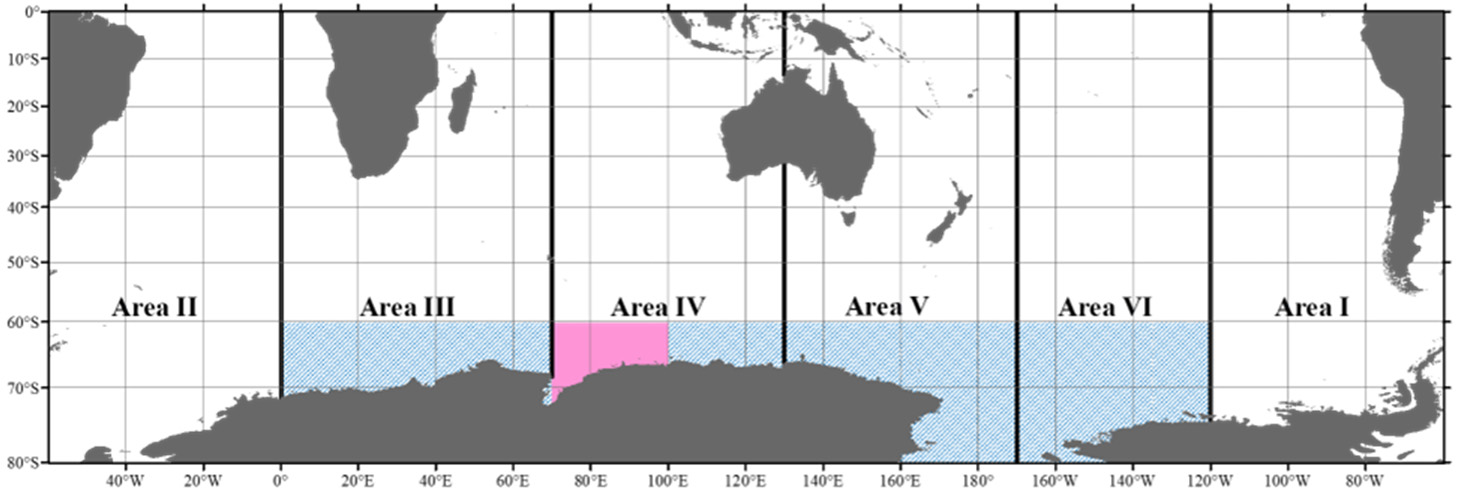
Figure 1. JASS-A Research Area. The 2023/2024 survey area is shown in pink. The blue box indicates all research areas.
2.4 Researchers
Yushin-Maru No. 3:
Five* researchers led by Tatsuya Isoda (Cruise Leader, Institute of Cetacean Research).
* Including one researcher from CEQUA, Republic of Chile.
Yushin-Maru No. 2:
Four researchers led by Takashi Yoshida (Deputy Cruise Leader, Institute of Cetacean Research).
2.5 Research Vessel
Yushin-Maru No. 3, (742 tons, Captain Nobuo Abe, 17 crews in total).
Yushin-Maru No. 2, (747 tons, Captain Chikamasa Okoshi, 16 crews in total).
Both ships are owned by Kyodo Senpaku, Ltd.
Forty-two members led by Cruise Leader Isoda and Captains Abe and Okoshi were onboard engaged in the research.
2.6 Implementing Body
Designated Corporation for Scientific Whale Research ? The Institute of Cetacean Research.
2.7 Total Search Distance (including mid- and low-latitude sighting survey)
7,746.0 nautical miles (about 14,345.6 km).
2.8 Main whale sightings (including mid- and low-latitude sighting survey)
Blue whale: 16 schools; 19 animals
Fin whale: 204 schools; 472 animals
Antarctic minke whale: 116 schools; 183 animals
Humpback whale: 900 schools; 1,768 animals
Southern right whale: 4 schools; 5 animals
Sei whale: 14 schools; 24 animals
Bryde's whale: 2 schools; 2 animals
Sperm whale: 74 schools; 100 animals
Southern bottlenose whale: 12 schools; 24 animals
Killer whale: 23 schools; 276 animals
2.9 Results from various Experiments and Observations
(1) Distance angle estimation experiment
A distance-angle estimation experiment was conducted to determine the accuracy of the estimation of the angle and distance of detection by each visual observer.
(2) Individual identification photo shooting (number of individuals)
Blue whale (16 animals), humpback whale (94 animals), southern right whale (5 animals), killer whale (84 animals).
(3) Biopsy sample collection (number of individuals)
Blue whale (8 animals), fin whale (9 animals), Antarctic minke whale (3 animals), humpback whale (24 animals), southern right whale (4 animals), sei whale (3 animals), killer whale (3 animals).
(4) Satellite tag attachment experiment
Satellite tags were attached to 6 fin whales, 2 Antarctic minke whales and 3 humpback whales to record their migration and diving behavior.
(5) Oceanographic observation by XCTD (Expendable Conductivity-Temperature-Depth probe)
Water temperature and salinity were measured at 148 stations from 0 to 1,850 m depth for the purpose of comparing oceanographic structure and cetacean distribution in the research area.
(6) Drone-based survey
Information on cetaceans and sea ice was collected over a total distance of 551 km by the autonomous flight of the VTOL-UAV ASUKA.
(7) Observation of marine debris
This year, one marine drifting object (a plastic buoy) was observed in the research Area.
3. 2023/2024 JASS-A Research Cruise photographs
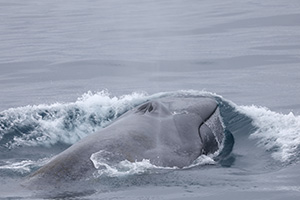 |
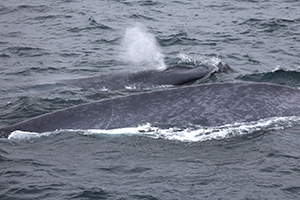 |
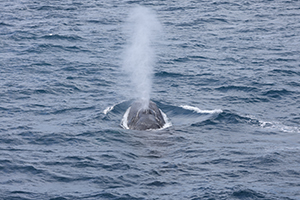 |
| Blue whale | Blue whale mother and calf (calf on far side) | Fin whale blow |
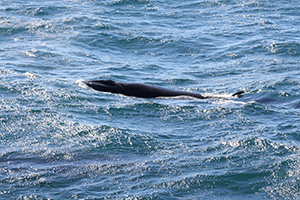 |
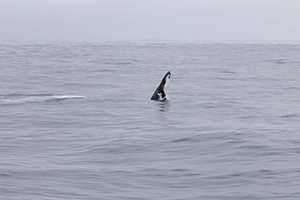 |
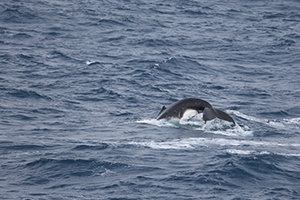 |
| Antarctic minke whale | Breaching humpback whale | Diving humpback whale |
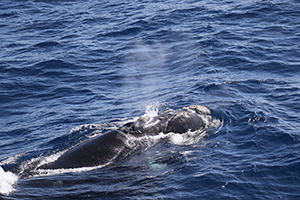 |
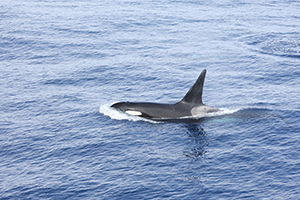 |
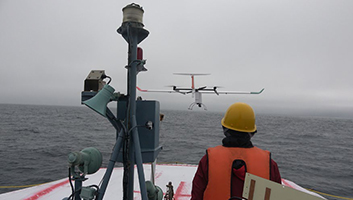 |
| Southern right whale | Killer whale | VTOL-UAV ASUKA taking off from onboard |
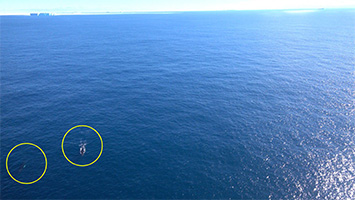 |
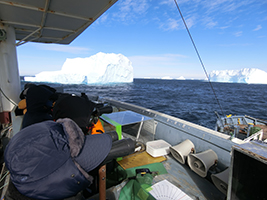 |
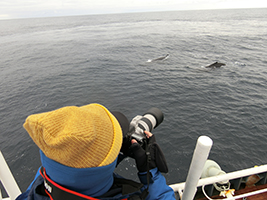 |
| Two humpback whales (lower left circles) photographed by the VTOL-UAV ASUKA | Sighting survey in the iceberg belt | Photo shooting humpback whales for individual identification |
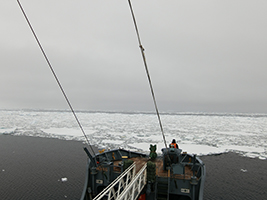 |
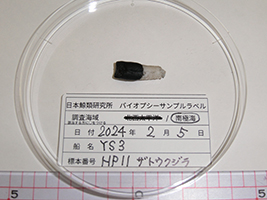 |
|
| Yushin-Maru No. 3 navigating through sea ice | Biopsy specimen of a humpback whale |
JASS-A Survey video available on the Institute's YouTube channel (https://www.youtube.com/channel/UCz3c9IIMiQPVeryAogmJIig)
Completion of Japanese Abundance and Stock-structure Surveys in the Antarctic (JASS-A) 2023/2024 Research Cruise (PDF file)
